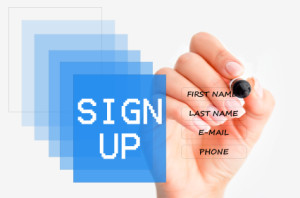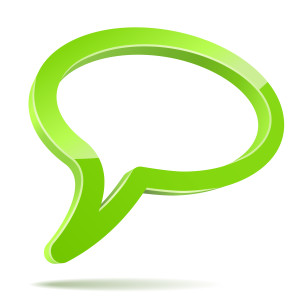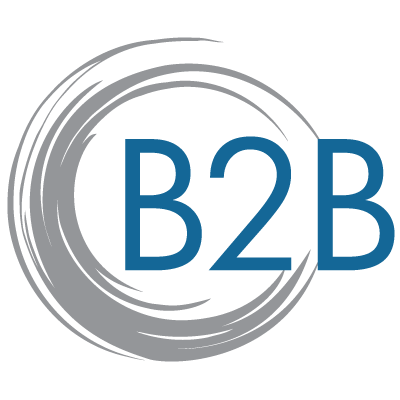
by gabriel_sales | Mar 18, 2014
 In B2B sales, we all know by now that we need to incorporate digital content into our sales processes. As a recent blog put it, “content is the fuel to our sales and marketing engine.”
In B2B sales, we all know by now that we need to incorporate digital content into our sales processes. As a recent blog put it, “content is the fuel to our sales and marketing engine.”
While content has many functions along the sales process, from lead gen to nurturing to SEO, etc., its greatest value is in helping move deals through the sales pipe to close.
In order for your content to help take buyers through the first stages of their buying journey, you need content that gets your name to the top of Google SERPs, educational content to help buyers understand your space and solution, and content that gently reminds not-yet-ready-to-buy leads of your value prop.
But to complete the journey, you need content that gives ready-to-buy prospects reasons to keep moving the deal forward.
From our experience running hundreds of outsourced sales and marketing campaigns for our clients, the three types of content we have found to be most effective in getting leads to ‘take the next step’ are:
- Checklists/Requirement Sheets
Many times in the early stages B2B content sales, prospects no close to nothing about your space or solution. Management consulting services and enterprise software solutions aren’t like iPods or toilet paper, where the general requirements are well known and risks of making the wrong decision are low. Because B2B sales are more abstract/technical and higher risk than other sales, B2B content buyers sometimes need help shopping.
Checklists and/or requirement sheets can therefore be very valuable to buyers who have never made a purchase decision in your space before. For example, in a B2B content software sale, you could offer a checklist titled, “10 Critical Features to Look for in a XYZ Software Solution” This type of content helps prospects who are nervous about buying feel more confident that your product/service will meet their needs, and they are making the most informed decision possible.
For more on B2B content continue reading the rest of this post, click here.
by gabriel_sales | Mar 14, 2014
 In this digital age, it is a buyer’s world.
In this digital age, it is a buyer’s world.
Before the days of Yelp!, Rotten Tomatoes and Angie’s List, there weren’t many places for buyers to go for commercial information on the products and services available to them. Buyers were left to phone books, trade shows and traditional media outlets to find the information they needed, which meant that they were essentially at the mercy of flashy advertisements and pushy salesmen.
Since the advent of the internet, that is no longer the case. Daniel Newman, author of the newly published book The New Rules of Customer Engagement, 6 Trends Reinventing the Way We Sell, explains:
“Today the average buyer engages with nearly a dozen pieces of content before they pick up the phone or visit a retail store. This means businesses need to invest in being a part of that first 70, 80 or 90 percent and the old hiring more sales people to cold call just isn’t going to cut it.” (Forbes)
Because buyers are going through so much of the buying process on their own now, sales and marketing teams must meet the buyers where they are at and offer genuine assistance—rather than interrupting their day with annoying ads and cold calls.
In B2B sales, this is especially important, as most B2B sales cycles are 1.5X longer than B2C. There are a couple of reasons for this. First, B2B sales generally have higher price points and purchases often require multiple decision makers to agree and sign off, which can take some time. Second is that in complex solution sales (i.e. an enterprise software solution), the discovery and education process takes longer to get through.
With the sales cycle extended, it is imperative that B2B companies find a way to reach prospects earlier in their buying process. By creating digital content (i.e. blogs, videos, webcasts, white papers, etc.) that allows buyers to educate themselves on their own time, you can still guide your prospects through the first stages of the buying process without needing to interact with them personally.
By allowing buyers to take themselves through your sales process on their own time and in their own way, they will start to trust you enough to want to build a relationship.
You can learn more about how selling and buying have changed and the new rules of engagement in this brief video. Please feel free to contact us with any questions.
by gabriel_sales | Mar 12, 2014

In today’s complex world of digital marketing, web forms or lead-capture forms seem relatively simple. However, as lead capture forms are tied directly to conversion, they should not be overlooked.
Here are 6 tips for better web form conversion:
1. Don’t ask for their life story.
Asking for too many details is the number one complaint of online buyers when completing web forms. The time issue is obviously a factor here, so you need to think about how much time you are asking your prospect to spend to get what they want from you (e.g. a phone call, white paper, etc.). How much time is a white paper worth to you? Additionally, as we are in an age when privacy and information security are of paramount concern, you need to be sensitive to the fact that you are asking for details your prospects wish to remain private. Bottom line: don’t ask for anything that isn’t absolutely critical to your sales process.
2. Don’t ask for details you already have.
If you are using a marketing automation platform during your digital marketing process, at some point, you will know a few things about your prospect. If your prospects have to reenter all of their contact details and basic company information every time they want to engage with you, they will likely get annoyed. To avoid this, you can use progressive profiling (a feature of your marketing automation platform), which allows you to “set up iterative forms that enable you to designate which questions appear based on what you already know about a particular lead” (Hubspot).
3. Make autoresponses more personal.
Because of marketing automation and tools like this, we now live in a world of automation. And as we become more and more internet savvy, we are getting better at deciphering an autoresponse from a genuine human interaction. For B2B sales where emotional connection plays a larger role, the more human your company is perceived to be, the better. In terms of autoresponder emails, you can seem more human by timing the autoresponse to come a while after the form has been completed, rather than instantly. For example, if someone fills out a form at 9 p.m., have the autoresponse come the next morning, when it makes more sense for someone to be sending a business related email.
4. Trade clear value in exchange for form submission.
It is time to stop with the “fill out this form to sign up for our newsletter” requests. It doesn’t matter who your company is, a company newsletter is not valuable content. If you want people to take the time to fill out your form and trust you enough to give you their personal information, you need to offer concrete value on your end. This goes beyond just saying, “Fill out this form for our new white paper.” You need to offer the value upfront by saying something like, “Learn 10 Ways to Improve Lead Quality” or “Fill Out this Form to Learn the Value of SaaS for Compliance”. By stating the value specifically, your prospects will be much more likely to engage.
5. Use dynamic content to display different content if form completed.
Along the same lines of progressive profiling, if you already have the information you need about a prospect, you shouldn’t be asking them to fill out more web forms. You can set up your marketing automation platform to display different content (e.g. a banner ad) for prospects you already have information on.
6. Split test number of forms and number of fields.
To make sure your web forms are converting at the rate you want, you should do some basic split testing. Testing the number of forms and the number of fields can both yield insights that will help you further improve conversion rates. For instance, you may find that by taking away two extraneous fields, your conversion rate doubles. Split testing will let you know what works and what doesn’t.
For more tips on improving conversion, read 5 Tips for Building Landing Pages that Convert. Feel free to contact us with any questions.
by gabriel_sales | Mar 10, 2014
 In late February, LinkedIn began rolling out a new publishing platform. While its impact in the world of content marketing remains to be seen, here is what you need to know:
In late February, LinkedIn began rolling out a new publishing platform. While its impact in the world of content marketing remains to be seen, here is what you need to know:
What
“LinkedIn is opening up our publishing platform to our members, giving them a powerful new way to build their professional brand. When a member publishes a post on LinkedIn, their original content becomes part of their professional profile, is shared with their trusted network and has the ability to reach the largest group of professionals ever assembled. Now members have the ability to follow other members that are not in their network and build their own group of followers. Members can continue to share their expertise by posting photos, images, videos and their original presentations on SlideShare.” ~ LinkedIn
Why
“One of our big, strategic bets for the company is for LinkedIn to become the definitive, professional publishing platform,” says Ryan Roslansky, Head of Content Products at LinkedIn. “We do this because we want LinkedIn to be the place where members can become productive, successful professionals – not just when you’re trying to find a job, or search for another person.”
In other words, LinkedIn needs a hook that would make it more of a daily or at least a weekly destination for end users, rather than a place you go to update your resume when looking for work.” ~TechCrunch
How
Once you have been given permission to publish on LinkedIn, the process for publishing is extremely simple. Here are the directions from LinkedIn:
- In the Share an update box on your LinkedIn homepage, click the Edit icon. This takes you to the writing tool.
- Write your post. To include visuals:
- Click the camera icon in the tools panel on the right.
- Click Browse in the box that appears.
- Select the file you’d like to upload and click Submit.
- Click Publish, Save, or Preview in the lower right.
- Click Close in the lower left to leave the writing tool
You can find many more answers to publishing questions here and a list of best practices here.
For more on using LinkedIn for B2B, read Using LinkedIn for B2B Marketing. Feel free to contact us with any questions.
by gabriel_sales | Mar 7, 2014

On the plains of Africa in the early days of humanity, there was no such thing as big data. We didn’t have numbers and statistics to help us determine what to do and what not to do. So, how did we learn, store and retain information about the world around us?
We used stories.
It was a story, rather than a statistic, that let us know that ‘this plant is poisonous’ and ‘that tiger will kill you’. While the world around us has changed dramatically since the time of tribal storytellers, humans still love to listen to and tell each other stories to inform, entertain and persuade.
Advertisers learned a long time ago that stories could be used as a tactic to influence buying behavior. In today’s digital marketplace where buyers are constantly bombarded with statistics and pushy sales messages, storytelling is one strategy that can help you stand out and close business.
Here are three easy ways to incorporate some basic storytelling into your content marketing strategy:
1. Plot structure
Most of us remember from elementary school that stories generally follow this structure: exposition, rising action, climax, falling action and denouement. Many of today’s great advertisements, including this year’s most popular Super Bowl Ad, also follow the classic storytelling structure.
By using this structure as the basis for your marketing content like blogs, white papers, webcasts, videos, testimonials, etc., your readers will be much more engaged with your brand. Telling a consistent story across different media channels also helps to create the trust required for closing in complex solution sales.
2. Characters
The fact that you likely know who ‘Flo’ is and what ‘the Allstate guy’ sounds like are evidence of the effectiveness of using characters in your sales and marketing messages. While it might not make sense for your business to feature a fictional character in your content marketing, you can still use voice and tone to humanize your content and give it some personality.
Another way to install characters in your marketing content is by telling your customers’ story in a creative way like Sprint did recently in a series of commercials. If you are able to tell a story where your customer is the hero, this can persuade prospects in the midst of a buying decision that they too could be a hero by making a purchase.
3. The ‘hook’
We all know the feeling of finishing a chapter in a novel or an episode in a television series—we are immensely invested in the story, then something dramatic happens and we are left with a cliffhanger. By intentionally not leaving everything on the table, you can use stories to create desire to know what happens next.
In B2B sales, creating an exciting and motivating hook is a bit more difficult, but it can be done. In a blog or video series, use the plot structure above and build some action with a few characters. Then, leave your readers hanging right before the climax and tell them when and where they can come back to find out what happens next.
For more on leveraging storytelling in your marketing content, read B2B Customers & Brands: Why Emotional Connection Matters. Feel free to contact us with any questions.



 In B2B sales, we all know by now that we need to incorporate digital content into our sales processes. As a recent blog put it, “content is the fuel to our sales and marketing engine.”
In B2B sales, we all know by now that we need to incorporate digital content into our sales processes. As a recent blog put it, “content is the fuel to our sales and marketing engine.”
 In this digital age, it is a buyer’s world.
In this digital age, it is a buyer’s world.


